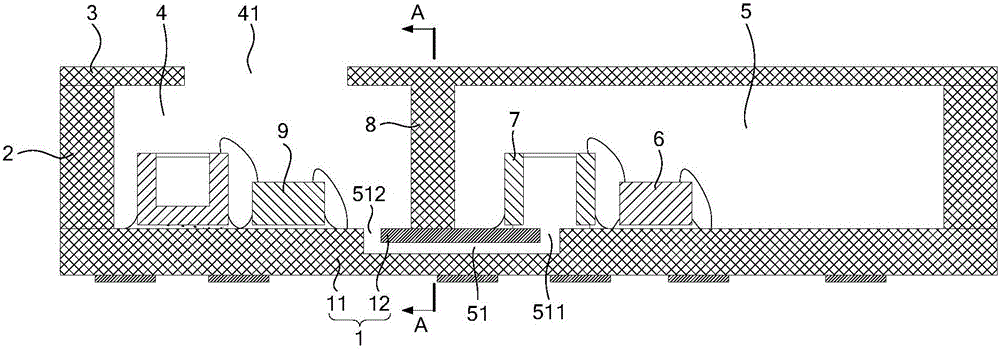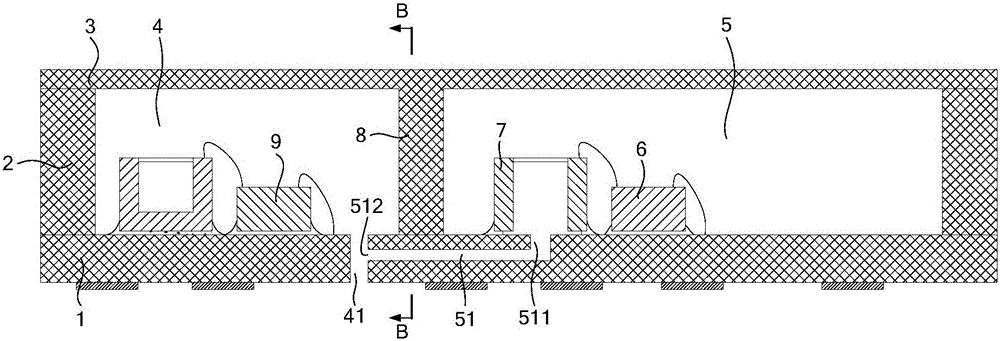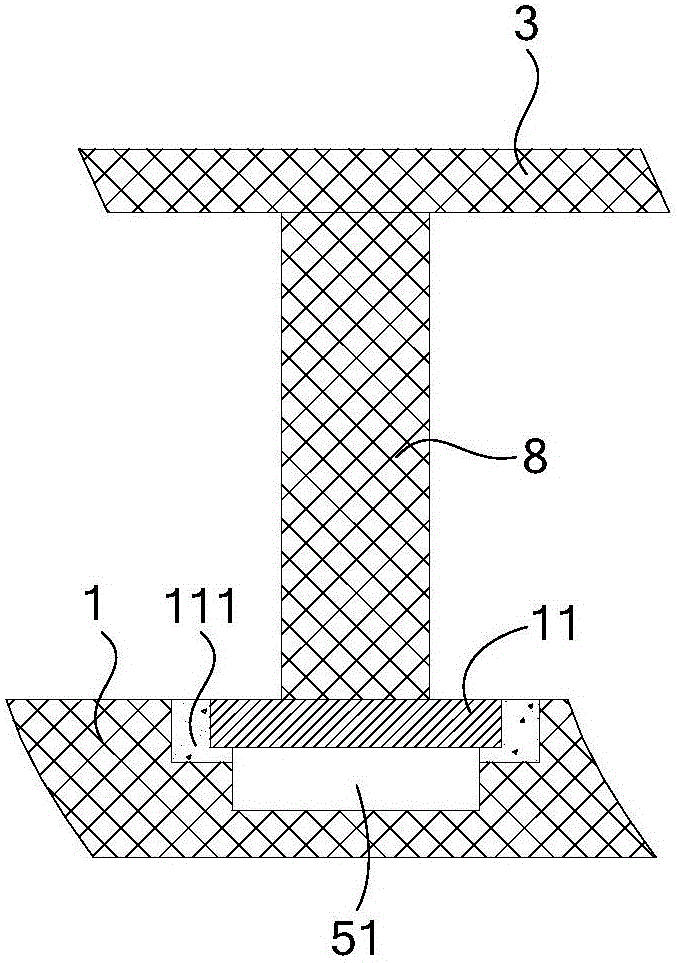Separated cavity packaging structure of integrated sensor
A technology integrating sensors and packaging structures, applied in the field of microphones, can solve the problems of limited product performance improvement, adverse effects of MEMS chips, and small back cavity of MEMS chips, so as to reduce the impact, increase the space of the back cavity, and improve perception. effect of speed
- Summary
- Abstract
- Description
- Claims
- Application Information
AI Technical Summary
Problems solved by technology
Method used
Image
Examples
Embodiment Construction
[0029] The core of the present invention is to provide a sub-cavity packaging structure for integrated sensors, which reduces the adverse effects of external airflow and dust on MEMS chips.
[0030] The following will clearly and completely describe the technical solutions in the embodiments of the present invention with reference to the accompanying drawings in the embodiments of the present invention. Obviously, the described embodiments are only some, not all, embodiments of the present invention. Based on the embodiments of the present invention, all other embodiments obtained by persons of ordinary skill in the art without making creative efforts belong to the protection scope of the present invention.
[0031] Please refer to figure 1 , figure 2 , image 3 and Figure 4 As shown, the embodiment of the present invention provides a sub-cavity packaging structure of an integrated sensor, including a MEMS chip 7, an ASIC chip 6, a circuit board 1, a housing and an enviro...
PUM
 Login to View More
Login to View More Abstract
Description
Claims
Application Information
 Login to View More
Login to View More - Generate Ideas
- Intellectual Property
- Life Sciences
- Materials
- Tech Scout
- Unparalleled Data Quality
- Higher Quality Content
- 60% Fewer Hallucinations
Browse by: Latest US Patents, China's latest patents, Technical Efficacy Thesaurus, Application Domain, Technology Topic, Popular Technical Reports.
© 2025 PatSnap. All rights reserved.Legal|Privacy policy|Modern Slavery Act Transparency Statement|Sitemap|About US| Contact US: help@patsnap.com



